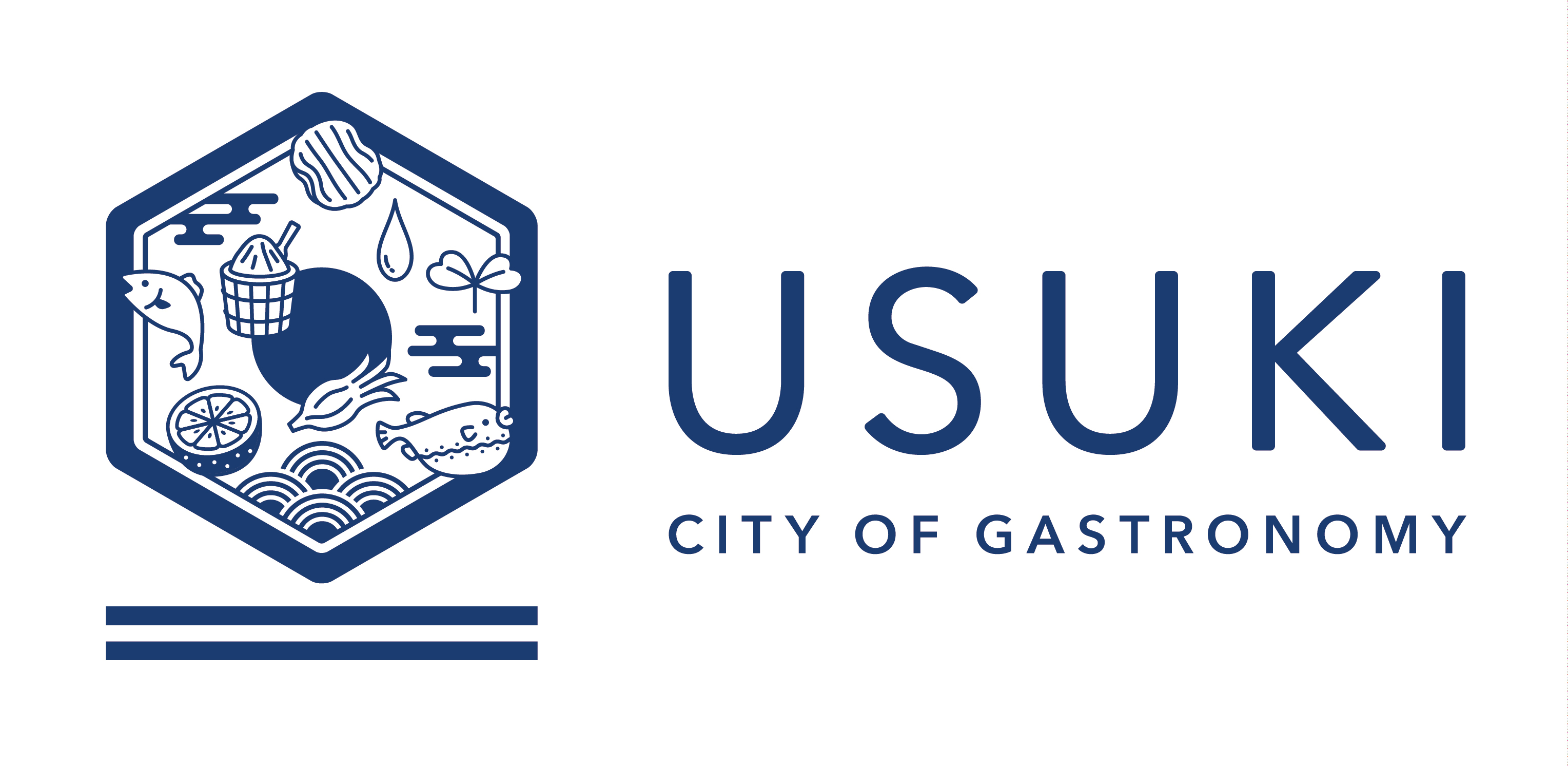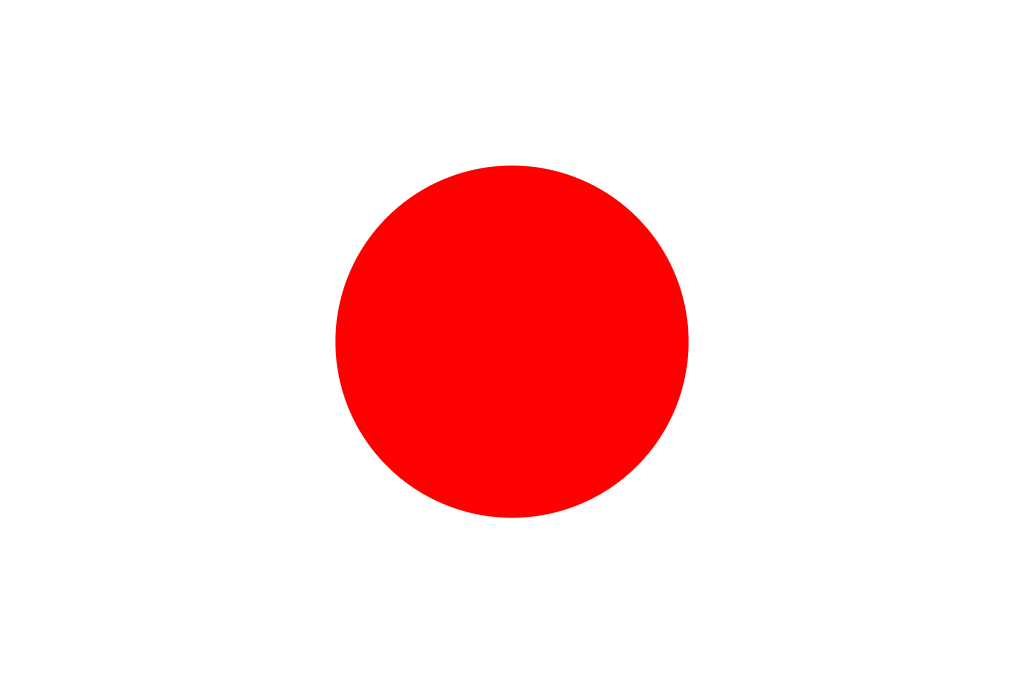Fugu Sashimi (Raw Puffer Fish)

At Kuge Honten, we have been producing and providing sake, full of flavour, that compliments this delicious fish. Many fugu restaurants use our sake, Ichinoide for their Hirezake (a drink that comprises of sake and the puffer fish’s fins). They are a great combination.
Yellow rice and Yellow rice Kayaku
 |
 |
In the past, the domain of Usuki, which often suffered from financial difficulties, would issue a simple frugality order focused on food and clothing.
During these times, luxuries such as red rice were not available because the red beans used in the meal were too expensive. Instead, Usuki’s lord provided his servants with yellow rice (left) and yellow rice kayaku (right). It is said that this is the origin of the dish.
The stunning bright yellow rice is made by immersing gardenia fruit in water and then using the dyed water to make the rice. The yellow rice is often served with kayayku, a mixture of steamed white fish (such as lizardfish), vegetables and tofu.
In contrast to yellow rice, which is based on samurai cuisine, kayaku was typically a merchant’s dish.
At that time, many people, including the Christian daimyo (regional leader) Sorin Otomo, were involved in the lively Nanban trade (trade between Japan, Spain, and Portugal). So, there is a theory that the dish was inspired by Spanish paella.
Merchants were extremely busy on New Year’s Eve and during the first sale (January sales), meaning they did not have time to cook and had very little time to eat.
It is said that the merchants would prepare large quantities of kayaku in a pot so they could survive the busy three-day New Year period.
As the pot was reheated many times, the ingredients would soak in the flavour and become more and more delicious. In addition, the dish could warm a merchant to his core on those cold winter days.
As the times have changed, the actual yellow rice has gradually decreased in popularity and these days kayaku is sometimes referred to as “yellow rice”.
(Excerpt from “Our Local Cuisine” on the Ministry of Agriculture, Forestry and Fisheries website)
Kirasumameshi

Similar to yellow rice, kirasumameshi is one of Usuki City’s local dishes. However, unlike yellow rice, which is a popular winter dish, kirasumameshi is eaten all year round.
In the past, the domain of Usuki, which often suffered from financial difficulties, would issue what was considered to be a prudent frugality order regulating food and clothing.
It was during a time such as this that kirasumameshi was first created. Its main ingredients are the remnants of fish that remain on the bone after preparing sashimi, and any sashimi leftovers, all mixed with soybean pomace (okara) to thicken it up.
Although it is a frugal dish, it is nutritious and loved by many ordinary people.
In Usuki dialect, okara is known as kirazu and mamesu is the act of sprinkling it.
The word kirasumameshi was formed by combining the words kirazu, mamesu and meshi (rice)
It is said that kirasumameshi was adored by the local merchants and annual tribute payers (people paying their taxes) who visited from their homes in the mountains during the old feudal era.
(Excerpt from “Our Local Cuisine” on the Ministry of Agriculture, Forestry and Fisheries website)
It also goes very well with warm Ichinoide sake.
Sesame Tofu

Usuki’s unique sesame tofu is served with a sweet and salty sauce called mitarashi.
Mitarashi sauce is made from shiitake mushroom stock and the taste is well known locally and loved by our residents. A thin slice of shiitake can be found in the sauce giving it a rich flavour.
Usuki “Drunk” Yellowtail Sashimi

Kuge Honten’s sake, tokubetsu junmai, uses Wakamizu rice, a cultivar known for producing excellent sake, cultivated in Ieno, Usuki City.
Usuki “drunk” yellowtail are raised on a mixture of regular feed combined with the sake lees of our tokubetsu junmai.
The flesh is characterized by its refreshing taste. According to the analysis of The Department of Food and Nutrition, Beppu University, the umami*, and richness values are higher than those of conventionally cultured yellowtail.
We hope you will have the opportunity to enjoy Usuki’s special yellowtail. With such strong local ties and links to our tokubetsu junmai - Ichinoide and tokubetsu junmai muroka namagenshu - USUKI, we think the experience is amplified, especially when eaten whilst envisioning the story of its origin.
*Umami is a core taste such as sweet, sour, etc. It is a deep, savoury flavour.
Sashimi Using Local Fish

Usuki benefits from many fresh-tasting white and blue fish.
The photo shows - seabream (centre), horse mackerel (bottom right), and red barracuda (bottom left) - sashimi.
With its strong rice flavour and slight acidity, our special pure rice - Ichinoide perfectly complements Usuki’s local fish. By bringing together these local ingredients, you can really feel the Usuki climate.
The “Usuki style” is to serve it with soy sauce and a drop kabosu juice, a speciality of Usuki, or kabosu ponzu sauce and onion slices.
Horse Mackerel Sashimi

There is a well-known luxury brand of fish that is very popular in Oita called Sekiaji (Seki horse mackerel). The Usuki horse mackerel (pictured) are close neighbours of the Sekiaji. When fresh their plump, tight meat is perfect for sashimi.
The “Usuki style” way to eat this delicious sashimi is to add some soy sauce with a drizzle of kabosu, our local speciality fruit, and a slice of onion. It goes well with our Honjozo Namazake Ichinoide.
Cuttlefish (Kouika) Sashimi

Cuttlefish or Kouika are sometimes referred to locally in Usuki as Kobuika.
They are in season in the winter.
Their sashimi is firm with a strong, sweet flavour, so you can enjoy the taste coupled with its chewy texture.
It also goes very well with warm Ichinoide sake.
Surume Squid Sashimi

In Usuki, Kensaki Squid are known as Surume Squid. It has a rich sweetness and umami and is a popular choice for nigiri sushi and sashimi. If you are able to leave it overnight, its meat will become softer and the flavour deeper with more umami. This is when it is at its most delicious.
Because the squid are in season in summer, they go well with our tokubetsu junmai muroka namagenshu - USUKI on the rocks. This is our special unfiltered, unprocessed (fresh) junmai.
Sea Salt Urchins (Purple Sea Urchins)

The purple sea urchins have a slight coastal scent, with a light, refined sweetness.
They are available to buy from Usuki market, distributed in bottles (labelled as sea salt urchins), so you can enjoy a richer and even more delicious taste.
They also go well with our sake, josen - Ichinoide, served hot.



 日本語
日本語